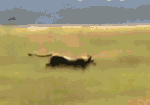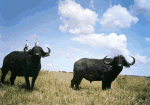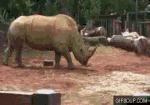Big Five Animals Facts
Despite their importance, the Big Five face an array of complex and interconnected threats that endanger their long-term survival:
- Habitat Loss and Fragmentation: Rapid human population growth, agricultural expansion, infrastructure development (roads, railways, settlements), and mining operations are encroaching on wild spaces. This not only directly reduces the available habitat for large animals but also fragments existing areas, isolating populations and limiting genetic diversity.
- Poaching and Illegal Wildlife Trade: This remains the most immediate and devastating threat for rhinos and elephants. Rhinoceros horn, falsely believed to have medicinal properties, fuels a lucrative illegal trade, pushing both white and black rhino species to the brink. Elephant ivory, prized for carvings and trinkets, has led to a dramatic decline in elephant populations across the continent. While less publicized, lions are increasingly targeted for their bones and body parts for similar markets, and leopards for their skins in some regions. This trade is often run by sophisticated international criminal syndicates.
- Human-Wildlife Conflict: As human settlements expand into wildlife corridors and traditional ranges, conflicts arise. Lions and leopards preying on livestock, and elephants raiding crops, often lead to retaliatory killings by communities seeking to protect their livelihoods. Competition for essential resources like water and grazing lands further exacerbates these tensions.
- Climate Change: Shifting weather patterns, prolonged droughts, and increased frequency of extreme weather events impact water sources and vegetation, directly affecting the Big Five's food and water availability. Climate change can also alter disease patterns, posing new threats to wildlife health.
- Disease: Outbreaks of diseases, sometimes originating from domestic animals, can decimate wildlife populations. For example, bovine tuberculosis can affect lions and buffalo, while anthrax outbreaks can impact elephants.
Addressing these complex threats requires a comprehensive, multi-faceted approach involving governments, local communities, NGOs, and the international community:
Protected Area Management: Establishing and effectively managing national parks, game reserves, and community conservancies is fundamental. These areas serve as vital refuges, providing secure habitats for wildlife to thrive, free from human encroachment.
Anti-Poaching Operations: This involves deploying highly trained ranger patrols, often supported by K9 units, aerial surveillance (drones, fixed-wing aircraft), and cutting-edge technology like satellite tracking and real-time data analysis. Intelligence gathering to dismantle poaching syndicates, both locally and internationally, is also crucial.
Community Engagement and Benefits: Empowering and involving local communities residing alongside wildlife is paramount. This includes revenue sharing from ecotourism, employment opportunities as rangers or tourism guides, and programs that mitigate human-wildlife conflict, such as predator-proof enclosures for livestock. When communities benefit directly from wildlife, they become its most ardent protectors.
Translocation and Reintroduction Programs: In some cases, animals are translocated from areas of high risk or overpopulation to safer, less populated regions, or to establish new populations. This strategy has been particularly vital for rhino conservation.
Scientific Research and Monitoring: Continuous research helps understand population dynamics, health, behavior, and genetic diversity. Monitoring populations through censuses, collaring, and tracking provides critical data to inform conservation decisions and measure the effectiveness of interventions.
Policy and Enforcement: Strengthening national laws against poaching and illegal wildlife trade, coupled with effective law enforcement and judicial systems, is essential. International cooperation through conventions like CITES (Convention on International Trade in Endangered Species of Wild Fauna and Flora) is vital to combat cross-border wildlife crime.
Sustainable Ecotourism: Developing and promoting responsible ecotourism provides a powerful economic incentive for conservation. Tourists' financial contributions directly support conservation efforts, local communities, and the protection of natural habitats.
Demand Reduction Campaigns: Educating consumers in demand countries about the devastating impact of illegal wildlife products is crucial to reduce the market for items like rhino horn and ivory.
Despite significant progress in some areas, conservation efforts face ongoing challenges, including funding shortfalls, corruption, political instability, and persistent socio-economic pressures that can drive poaching.
|










